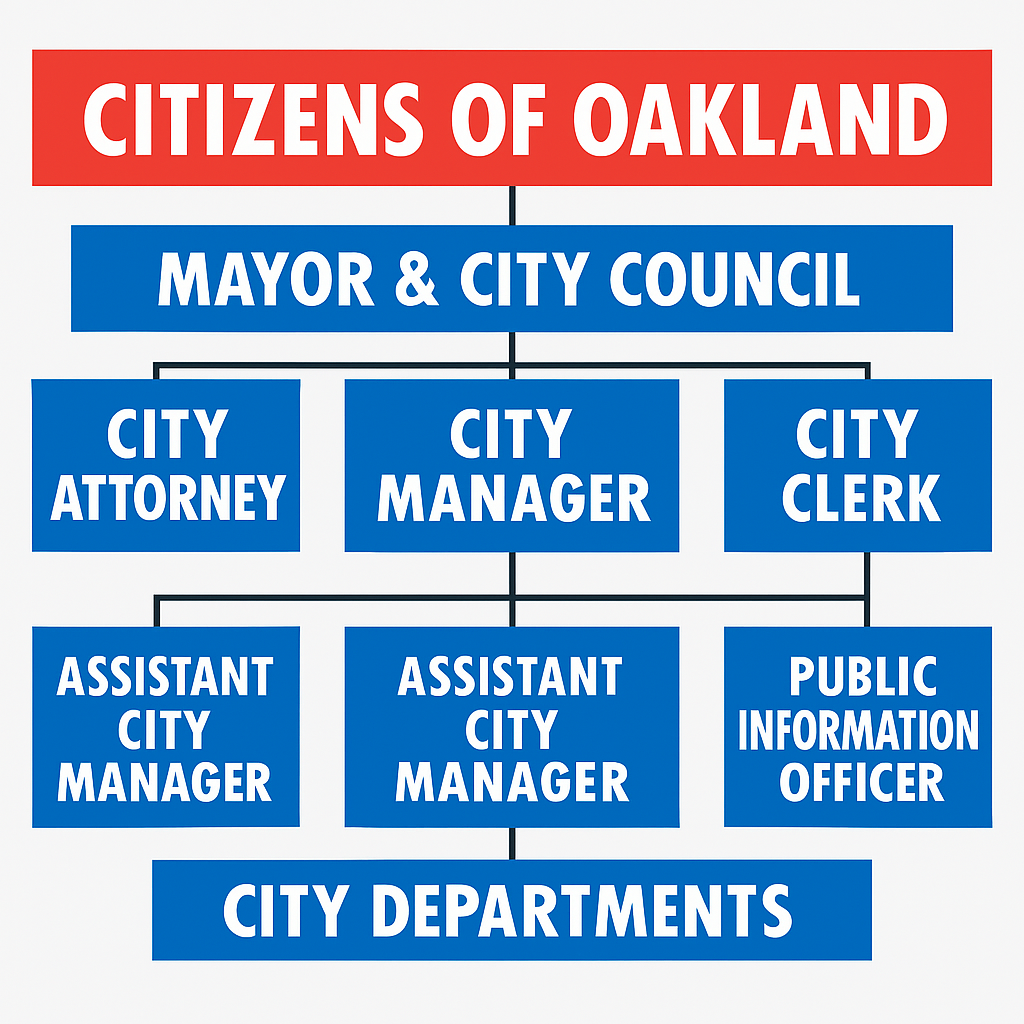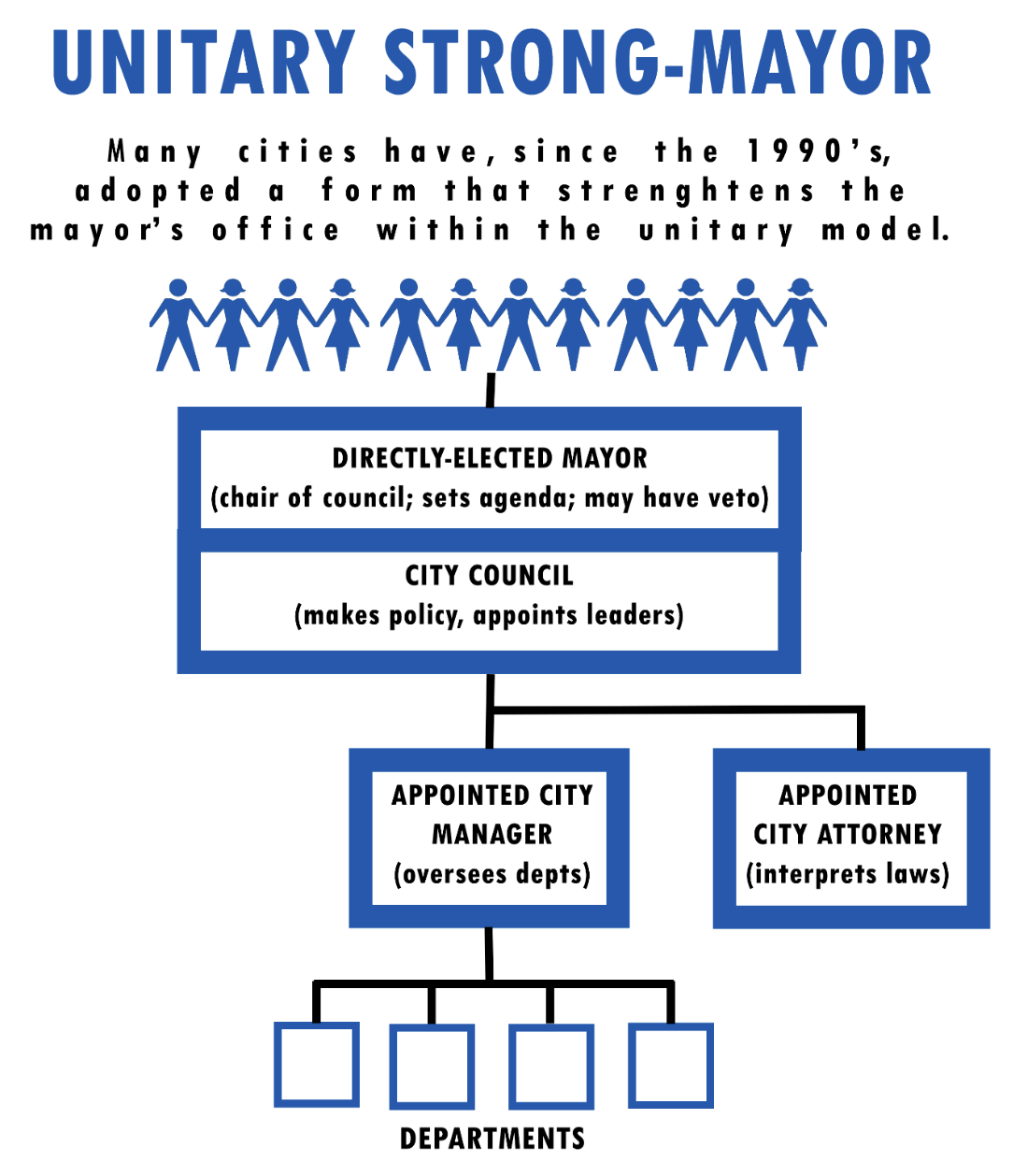The council-manager form of government is used in many cities and municipalities, combining democratic leadership with professional management. It is designed to promote efficiency and reduce political influence in administrative decisions.
Org Chart for a Typical Council-Manager Government:

Our Modern Variation: The Unitary Strong-Mayor
Many California cities have updated the traditional council-manager model by giving voters a visible, city-wide elected Mayor who leads the Council while a professional administrator keeps City Hall running. This "Unitary Strong-Mayor" approach blends the transparency and professionalism of the council-manager system with clearer, stronger political leadership.

How It Differs from the Classic Model
- Elected Mayor Leads the Council: The Mayor chairs meetings, sets the agenda, and may have veto power—so residents know who's accountable.
- Professional City Administrator: Hired by the Council (with the Mayor's leadership) to run day-to-day operations, ensuring continuity beyond election cycles.
- Single City Attorney: Appointed (not elected) to provide clear, apolitical legal advice to the entire city government.
- One Government, Clear Roles: Policy is set by the elected Council, execution is handled by professionals, and the Mayor provides unified leadership.